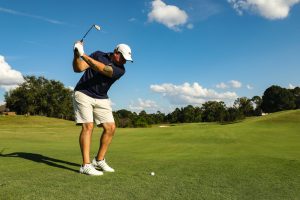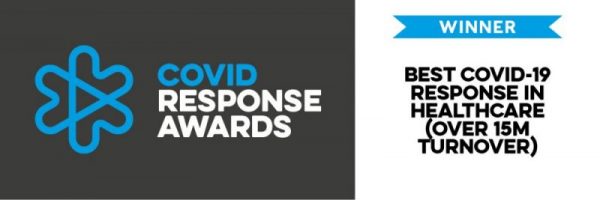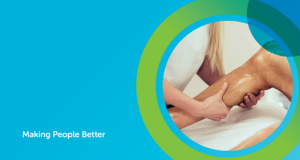Share
Golf Masters – Back, wrist and elbow
By Tuen Yeung Ng Chartered Physiotherapist
Have you ever suffered from any injuries / pain from playing golf? Spend 5- 10 minutes having a read of this article to see if you can relate. Golf is not a high-impact sport, but golf-related injuries do occur, particular in the lower back, wrist and elbow. These three sites account for approximately 80% of all injuries sustained by golfers. Various injuries can occur in different sections of the golf swing, and they are frequently involved soft tissue injuries.

Wrist/Hand injuries
During the golf swing, the wrist is the anchor point between the club and the body. This results in the wrist displaying a large range of motion. Due to repetitive wrist movement during practice or the sudden change in load applied to the club during golf swing. It could result in increased stress and cause tissue disruption to and hand and wrist
Common injuries include:
- Sprain: The stretched or torn ligaments can result in pain, swelling, bruising and instability.
- Tendonitis: the tendons of your wrist can get swollen and inflamed as a result of overuse.
- Carpal tunnel syndrome: the nerves that run through your wrist bones (carpal tunnel) can get pinched as a result of swelling or structural damage in the joint. It leads to numbness and weakness in your hand and fingers.

Elbow injuries
Interestingly, Tennis elbow (lateral elbow injuries) are more common than Golfer’s elbow (medial elbow injuries.)
- Medial elbow injuries (Golfer’s elbow) – this type of injury is usually traumatic in nature and occurs at the time of impact. The sudden deceleration of the club head increases the loading of the medial elbow. This can be due to hitting obscured rocks and tree roots.
- Signs of medial epicondylitis (Golfer’s elbow) – pain on the bony bump on the inside of your elbow joint. It can lead to weakness and stiffness in the joint.
- Lateral elbow injuries (Tennis elbow) – this type of injury can be caused by gripping the club too tightly during the swing, causing overuse of the associated extensor muscles. Besides, excessive practice may also result in injury to the lateral elbow. The large increase in flexor activity and the rapid wrist movement at the same time could places a large stress on the elbow joint and may result in injury.
- Signs of lateral epicondylitis (Tennis elbow) – Pain and tenderness to touch on the outside of your elbow (lateral epicondyle). Pain is often aggravated by resisted forearm extension.
Back injuries
Golfers with lower back pain (LBP) tend to have abnormal trunk muscle recruitment patterns and less muscle endurance which may reduce the ability of the lower back muscles to protect the spine, causing LBP.
Besides, the Asymmetrical, forceful rotation of golf swing can potentially cause or increase compressive load and stress to the spine which may contribute to muscles strain /ligament sprain, disc injuries, degenerative changes of the facet joint and stress fractures.

In most cases, golf related injuries can be treated with load management and exercise therapy. If you are unsure about your diagnosis or your symptoms persist or get worse, seek advice from health care professionals e.g. GP, physiotherapist etc.
If you have any golf-related injuries, pain or musculoskeletal problems, feel free to get in touch with Vita health Group: enquiries@vhg.co.uk 020 8778 9050
McHardy, A. J., & Pollard, H. P. (2005, May 25). Golf and upper limb injuries: A summary and review of the literature – chiropractic & manual therapies. BioMed Central.
Lindsay, D. M., & Vandervoort, A. A. (2014, December). Golf-related low back pain: A review of causative factors and prevention strategies. Asian journal of sports medicine.
Related News
Vita is an award-winning, CQC registered healthcare provider














